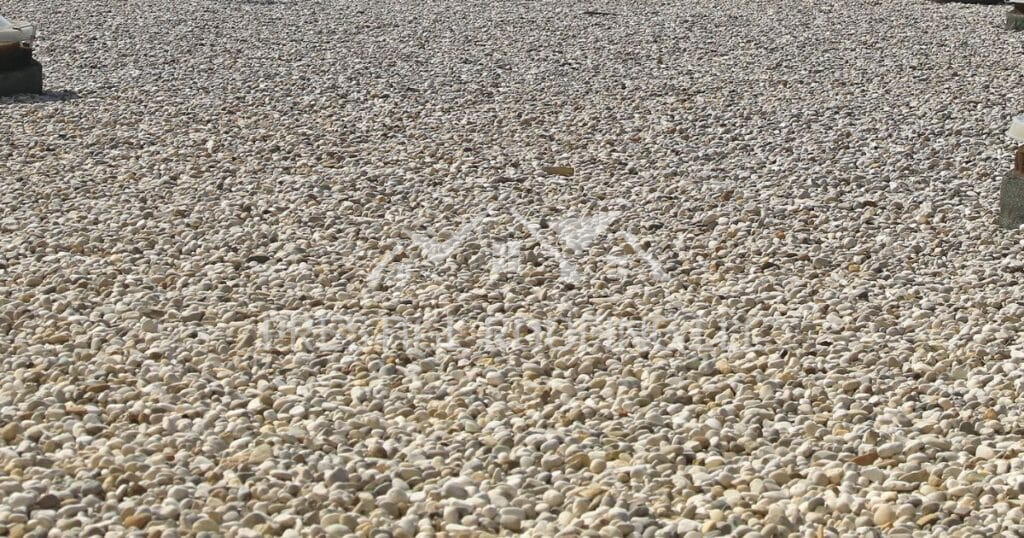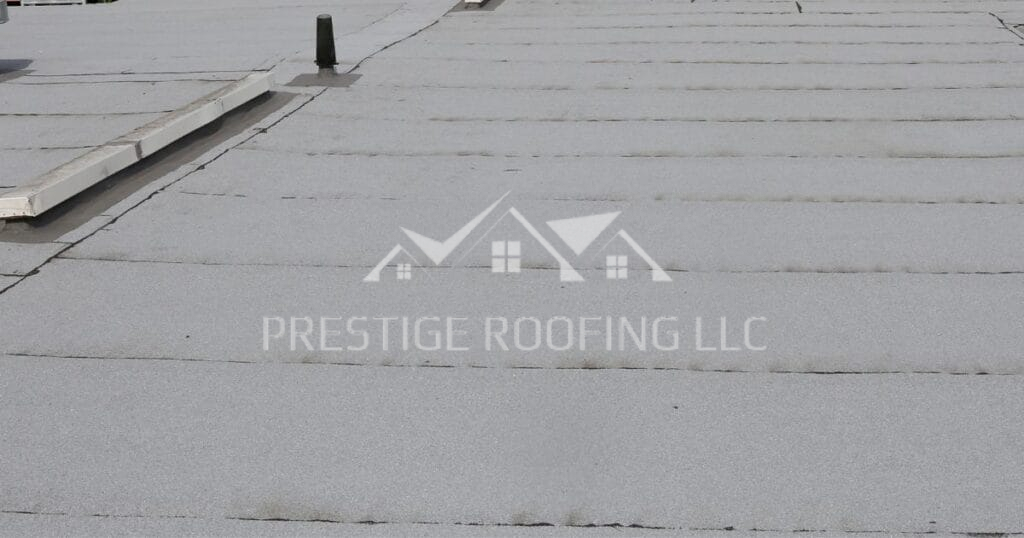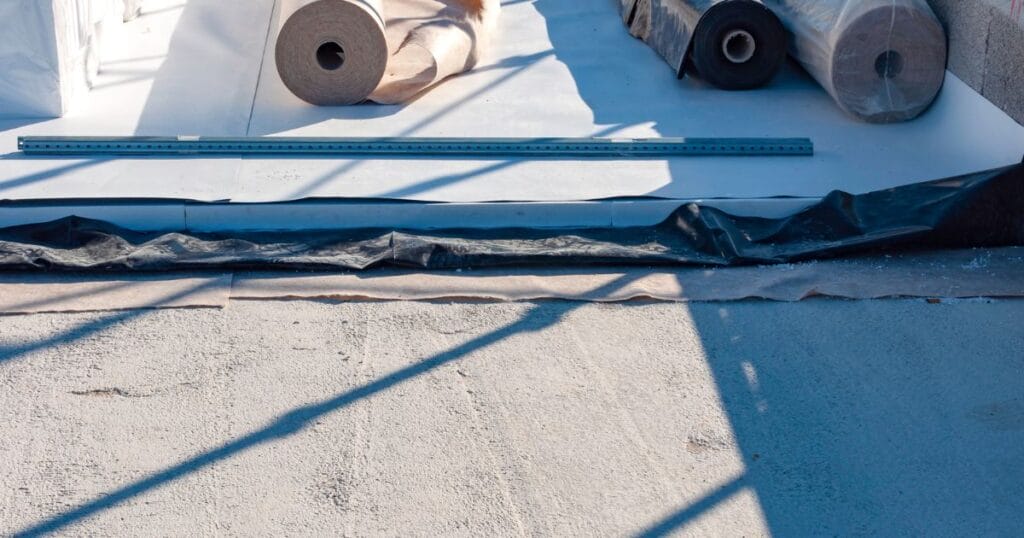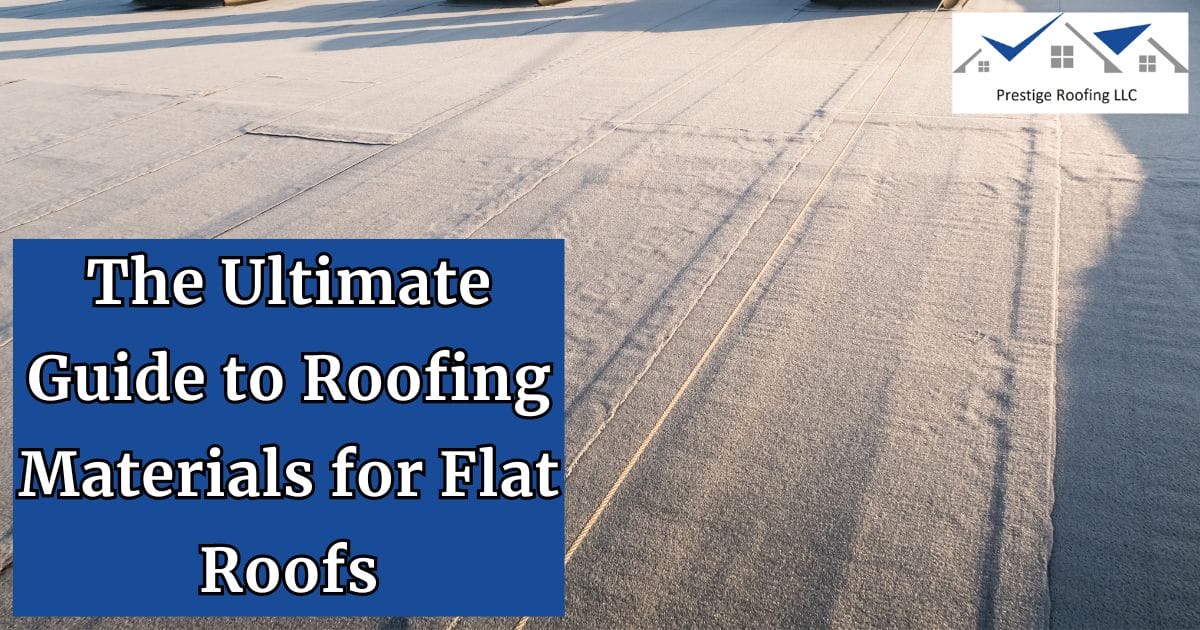Modern homes, commercial buildings, and additions frequently utilize flat roofs. In comparison to pitched roofs, they can be less expensive to install and have a sleek, minimalistic appearance. But in order to guarantee a flat roof’s longevity and functionality, selecting the appropriate roofing material is essential.
In this blog post, we will learn about roofing materials that are suitable for flat roofs, going over their features, benefits, and things to keep in mind.
Factors To Consider Before Selecting A Flat Roofing Material
When you’re selecting a roofing material for a flat roof, it’s essential to consider several factors to ensure it meets your needs and protects your property effectively:
- Climate: Take into account the local weather conditions. Opt for materials that can withstand UV exposure in sunny areas and offer resistance to water damage in regions with heavy rainfall.
- Cost: Evaluate the upfront cost and long-term savings. While some materials may have a higher initial expense, they may prove cost-effective over time due to their durability and low maintenance requirements.
- Durability: Prioritize materials known for their durability and ability to resist wear and tear, including punctures and tears, ensuring longevity and reliability.
- Building Codes: Ensure that your chosen roofing material complies with local building codes and regulations to guarantee safety standards and avoid potential issues during inspections.
- Maintenance: Consider the material’s maintenance needs. Select a material that aligns with your maintenance capabilities and budget, whether it requires periodic cleaning, inspections, or repairs.
- Aesthetics: While not the primary concern, consider the visual appeal of the material and its compatibility with your home’s design and style.
Also Read: Breaking Down Flat Roof Replacement Cost In 2024
Types of Roofing Materials for Flat Roofs
Here’s a breakdown of all the different flat roofing materials you can choose from:
1. Built-Up Roof (BUR)

For flat or low-pitched roofs, a built-up roof (BUR) is a long-lasting roofing solution made up of layers of bitumen, ply sheets, insulation, flashing, and surfacing materials. BUR systems, sometimes referred to as tar and gravel roofs, have been in use for more than a century.
They provide a strong seal to prevent leaks and defend against physical damage and weathering. With reflective surfaces that lower heat transfer and therefore, energy bills, their lifespan can extend as high as 30 years or more, particularly in warmer climates.
- Multiple Layers: BUR systems use layers of bitumen and reinforcing fabrics to create a unified membrane
- Durable and Long Lasting: Last around 15 to 30 years due to their resilient design
- Versatile: Can be customized with different materials to fit specific building needs
- Energy Efficient: Modern BUR systems include insulation for improved energy performance
- UV Protection and Fire Resistance: They offer UV protection and fire resistance with their top layers and bitumen
- Low Maintenance: They require minimal upkeep, reducing long-term costs
- Susceptible to Wind and Water Damage: Some BUR systems may need regular maintenance to withstand wind and water damage
2. EPDM (Ethylene Propylene Diene Monomer)
Due to its weather resistance and durability, EPDM is a synthetic rubber that is widely used in many different industries. It is widely recognized for its extensive temperature range, strength, and ability to withstand abrasion. Because of its low maintenance requirements, affordability, and environmental friendliness, it is frequently used in outdoor applications such as roofing.
- Temperature Resistance: Can withstand -60°F to 250°F, making it suitable for both cold and hot environments
- Environmental Resistance: Resists ozone and sunlight, perfect for outdoor use
- Tear, Abrasion, and Steam Resistance: Tough against tears, abrasion, and steam
- Low Cost: Cheaper than silicone, making it economical
- Versatile: EPDM rubber is versatile and used in various applications
3. Modified Bitumen

A resilient and adaptable roofing material, modified bitumen is frequently utilized in commercial and industrial buildings. In order to provide outstanding weather resistance and waterproofing properties, asphalt is blended with polymers like APP or SBS.
It is easy to install, energy efficient, and environmentally friendly, with a lifespan of around 20 years. It is still widely used because it’s easy to repair, has outstanding longevity, and has the capacity to absorb heat despite its dark color. Modified bitumen material continues to be a dependable and appropriate choice for low-sloped or level roofs, even in the face of roofing technology advancements.
- Durable: Modified bitumen roofs last over 20 years with proper care
- Weather Resistant: It withstands various weather conditions, including extreme temperatures and hail
- Waterproof: Designed to repel water, ideal for flat or low-sloped roofs
- Energy Efficient: Limits heat flow, reducing energy consumption
- Versatile: Offers flexible installation methods for different roofing needs
- Easy Installation: Simple to install, especially with self-adhered options
- Simple Repairs: Easily patched or replaced when damaged
- Environmentally Friendly: Can be made eco-friendly with sustainable materials and practices
4. PVC (Polyvinyl Chloride)

A popular choice for roofs, PVC is valued for its dependability, longevity, and ease of installation. Its light weight makes it easy to handle, which is especially useful for DIY tasks.
Porches, garden sheds, garages, and other outdoor structures can all benefit from PVC roofing membranes, which are well-known for their ability to withstand weather. Since PVC is durable, affordable, and weather-resistant, it’s a wise and affordable option for roofing projects on both residential and commercial buildings.
- Lightweight and Sturdy: PVC is light but tough, and highly resistant to abrasion
- Chemical Resistant: Resists all inorganic chemicals, ideal for corrosion-prone areas
- Insulation Properties: PVC is a great choice for enhancing insulation and vapor barriers
- Weather Resistant: Endures extreme weather, shock, and corrosion, perfect for outdoor use
- Long-lasting: These products offer durability and a decent lifespan.
- Flexibility: PVC can be softened with plasticizers like phthalate, making it suitable for diverse applications
- Economical: PVC is cost-effective, needing minimal upkeep and resisting grease and oil
5. TPO (Thermoplastic Polyolefin)

In the commercial and industrial sectors, TPO is becoming more and more popular due to its strength, energy efficiency, and resistance to leaks. Made from a combination of ethylene-propylene and polypropylene rubber, it has special qualities that make it perfect for modern roofing requirements. TPO also reduces heat absorption with its reflective surface, which lowers energy costs and improves occupant comfort.
When compared to traditional materials, its exceptional resistance to rips, punctures, and leaks results in lower maintenance requirements and long-term savings. TPO is an attractive option for commercial applications because of its benefits, which include long-lasting resilience and energy savings, which ensure significant cost-effectiveness over the roof’s lifespan.
- Cost-Effective: TPO is an economical option compared to PVC and other materials, providing savings for property owners
- Flexibility: This roofing suits various properties, residential or commercial, and comes in different colors for aesthetic preferences
- Easy Maintenance: It requires minimal upkeep and resists mold, punctures, tears, and dirt accumulation while accommodating building movements
- Easy Installation: Lightweight TPO roofing sheets ensure quick and straightforward installation, reducing labor costs and offering various installation methods, such as adhesives or direct fastening
- Energy Savings: Energy-efficient, exceeding EPA Energy Star requirements with their reflective properties. They reduce cooling expenses in warm climates and maintain coolness in summer
Maintenance Tips for Flat Roofing Materials
Now that you know the different types of roofing materials used for flat roofs, let’s learn how to maintain them so that you receive the benefits of your chosen material for years to come.
1. Conduct Regular Inspections:
It’s crucial to inspect your flat roof often. Make sure to check it at least twice a year, in spring and fall, for any early signs of damage like cracks or blisters.
2. Keep It Clean:
Clear away leaves and debris regularly. If they pile up, it can block drains and lead to water pooling, causing leaks. Regular cleaning helps maintain your roof’s strength and keeps your building dry inside.
3. Check Drains:
Ensure gutters and drains are clear to prevent water buildup, which can cause leaks and damage, and clear them as necessary to help your roof last longer.
4. Remove Moss and Lichen:
Moss and lichen can slowly destroy your roof over time by trapping water and moisture against the surface of a flat roof. Remove them using safe cleaning methods to preserve your roof’s strength and appearance.
5. Fix Missing Parts:
Missing shingles or gravel can let water in and damage your roof and building. To maintain your roof’s strength and waterproofing regularly check for, and fix, any missing parts.
6. Inspect The Interior:
Check the interior of your building for signs of water damage, like stains or cracks. Catching leaks early prevents extensive repairs and keeps your building safe.
7. Trim Trees:
Overhanging trees can drop debris onto your roof, causing damage. Regularly trim branches back to prevent this and make roof maintenance easier.
8. Use Compatible Materials:
When repairing your flat roof, ensure you’re using materials that work well together as using the wrong materials can weaken your roof. Consult a roofing expert to ensure compatibility and prolong your roof’s life.
Conclusion
The longevity, functionality, and aesthetic appeal of a flat roof are all impacted by the choice of roofing material, so it’s critical to make the right choice for your needs. There are many options available that will work as the best material for a flat roof, ranging from the traditional built-up roofing system and modified bitumen to the sleek and contemporary EPDM and TPO.
Our goal at Prestige Roofing is to assist you in finding the ideal flat roofing option for your home. With our high-quality flat roof installation services, our experienced roofers can help you sort through the options and choose something that will look great, function well, and last as long as your building. We guarantee that your new flat roof will be sturdy, weatherproof, and highly desirable using premium materials and skilled installation. Call us today at (920) 791-0414 to learn more.

